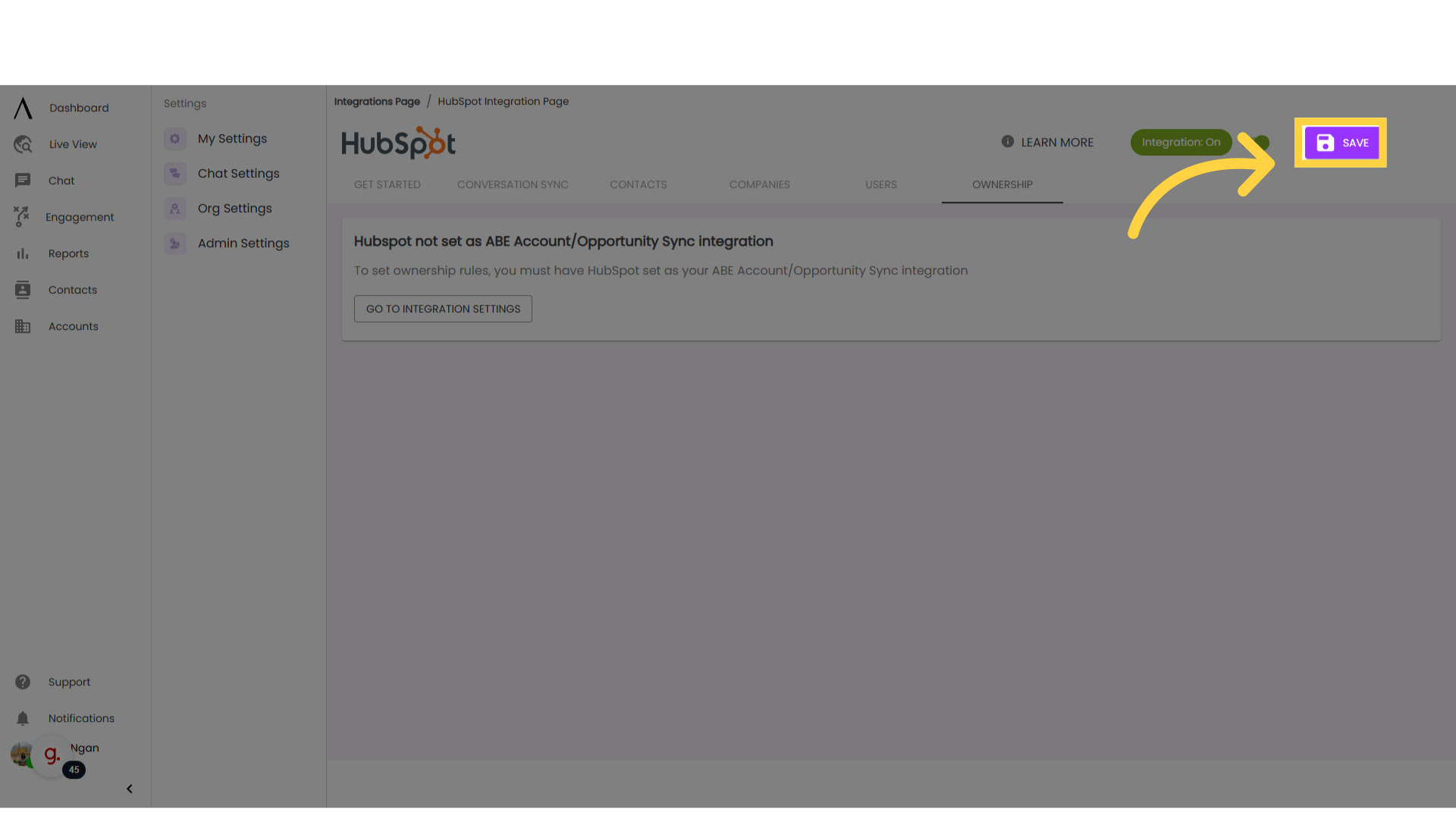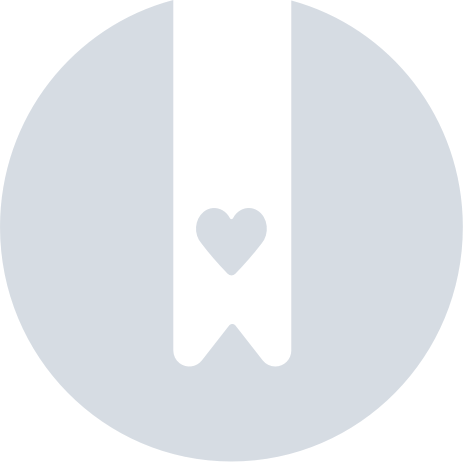All Categories > Getting Started > CRM Integration > HubSpot
HubSpot
- CRM Integration: HubSpot
- Go to app.getsignals.ai
- 1. Click on your Profile
- 2. Navigate to "Integrations"
- 3. Select "HubSpot"
- 4. Click "Start activation"
- 5. Click "Choose Account"
- 6. Turn on the integration
- 7. Go to "Conversation Sync"
- 8. Configure your Minimum Criteria
- 9. Set your "Default List"
- 10. Establish delay times
- 11. Determine "Contact Owner Rules"
- 12. Navigate to "Contacts"
- 13. Configure "Contact Property Mapping" sections
- 14. Click "Add Field"
- 15. Go to "Users"
- 16. Click "Add User"
- 17. Navigate to "Ownership"
- 18. Segments
- 19. Remember to click "Save!"
CRM Integration: HubSpot
The HubSpot integration enables a two-way sync. Leads gathered by Signals (either through bot conversations or Contact Discovery) can be sent to HubSpot. Account information (including name, domain, opportunity status, account owner, and account type) can be synced over to Signals for segmenting and agent routing.
Go to app.getsignals.ai
1. Click on your Profile
To set up your HubSpot integration, click on your Profile in the bottom left corner.
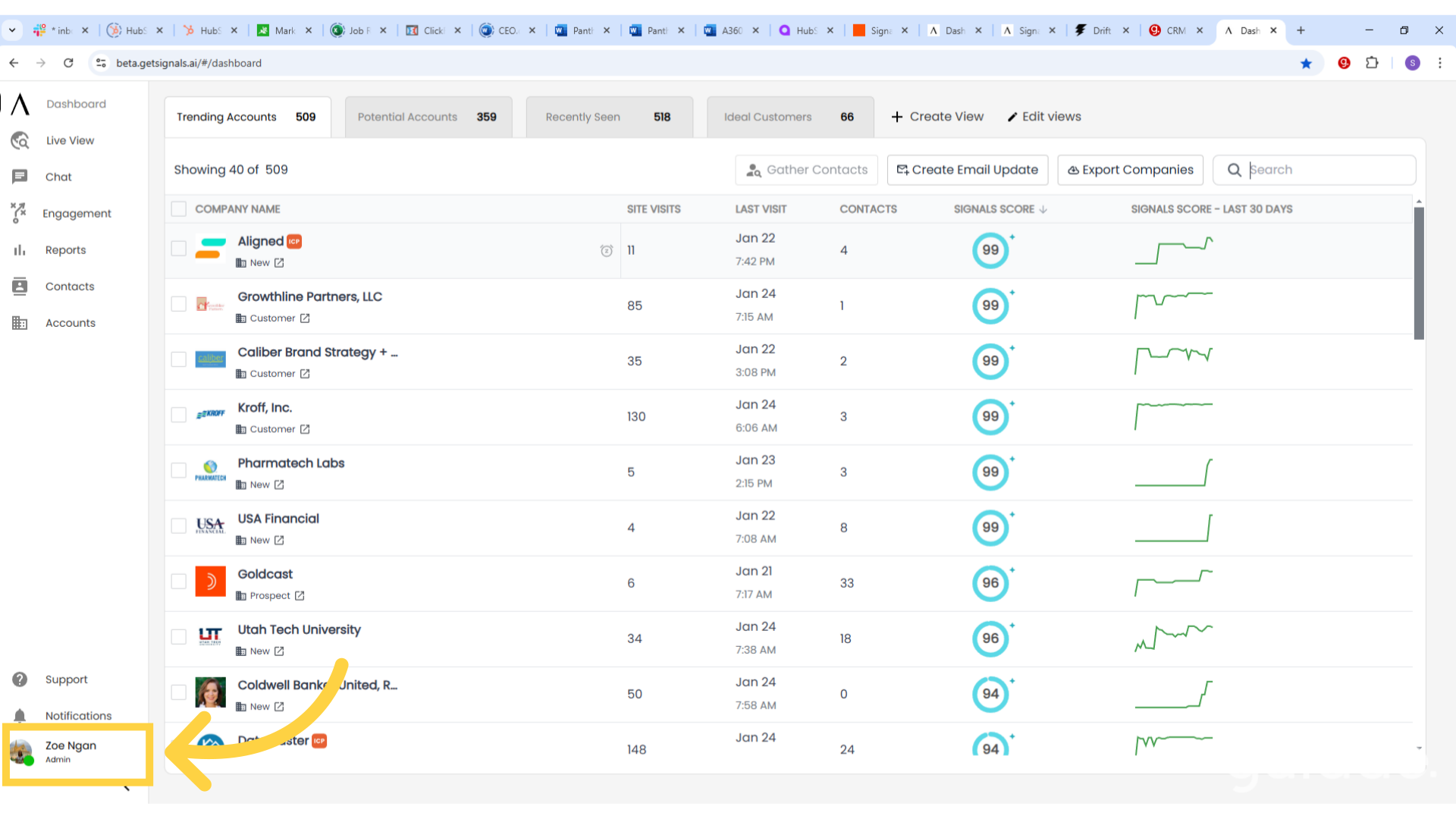
2. Navigate to "Integrations"
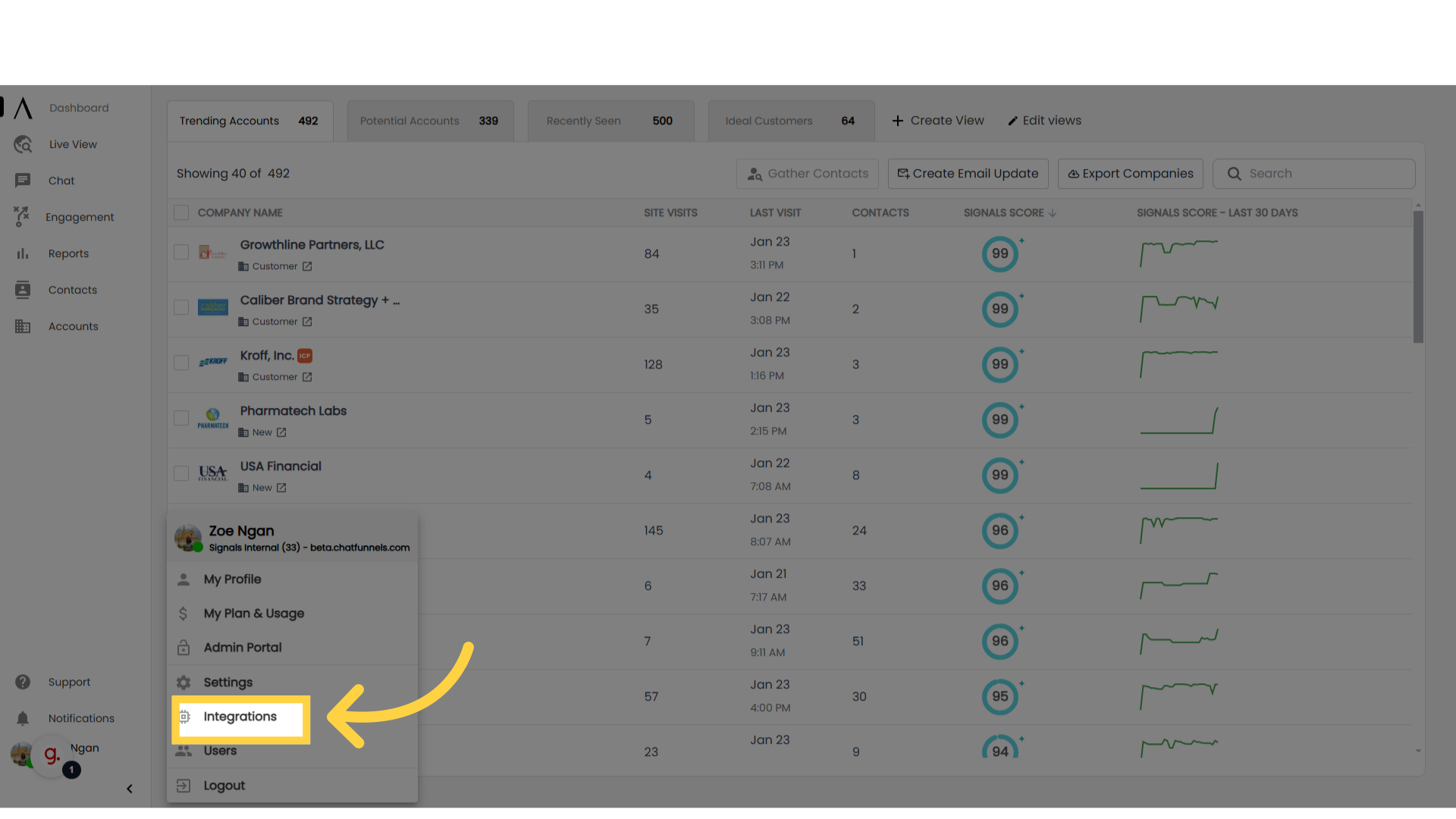
3. Select "HubSpot"
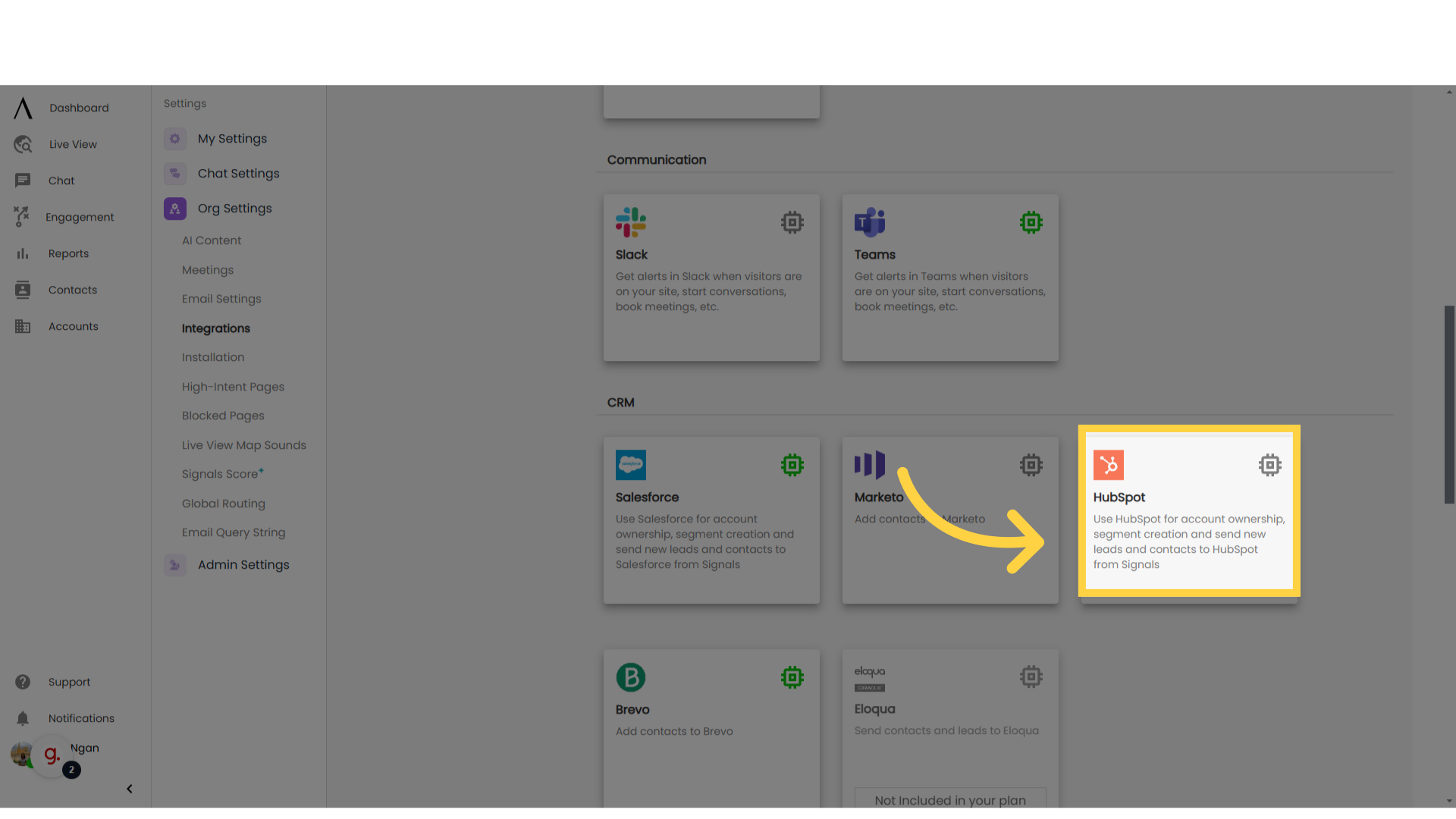
4. Click "Start activation"
After clicking “Start Activation”, you will be navigated to HubSpot to complete the connection.
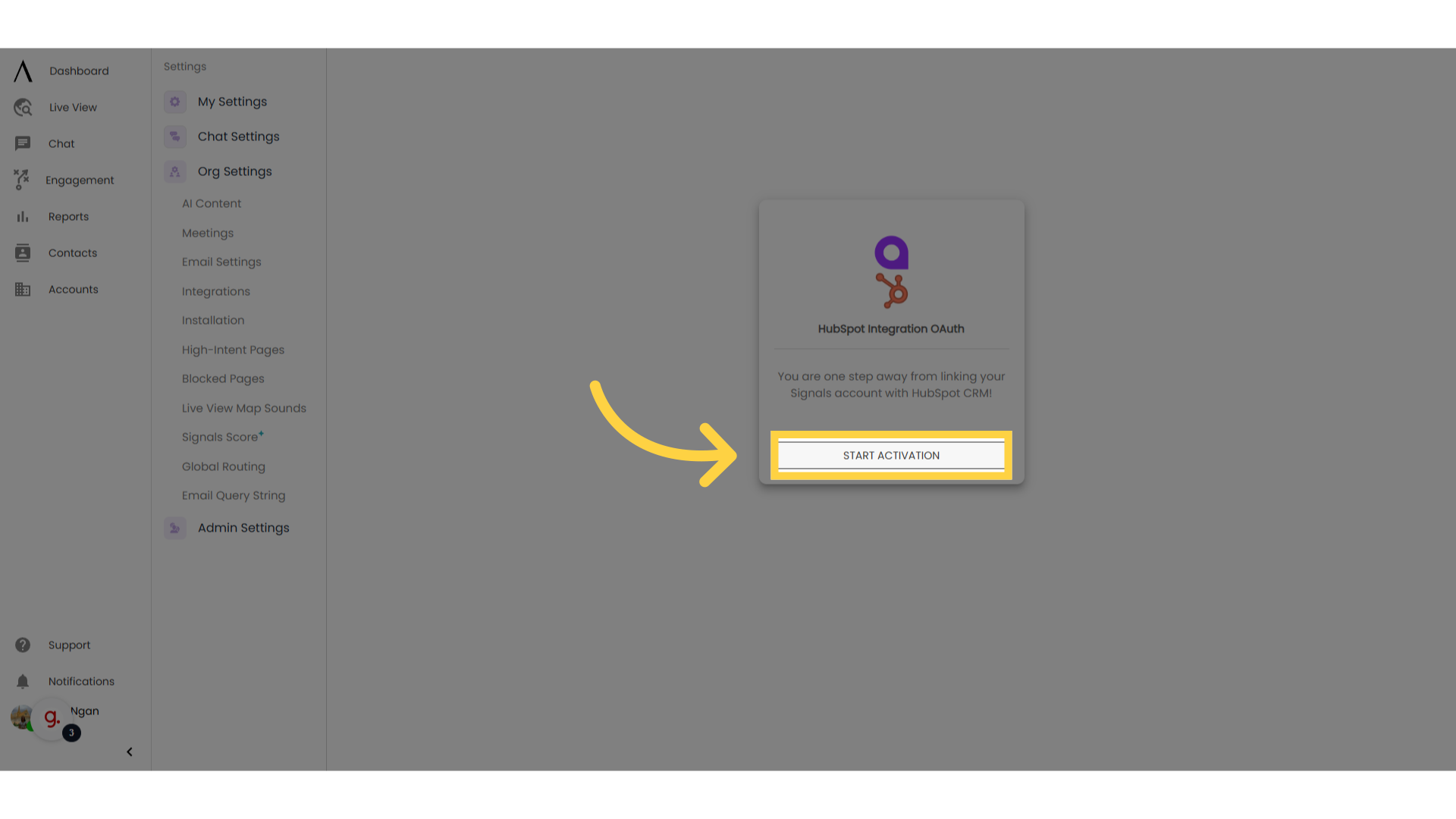
5. Click "Choose Account"
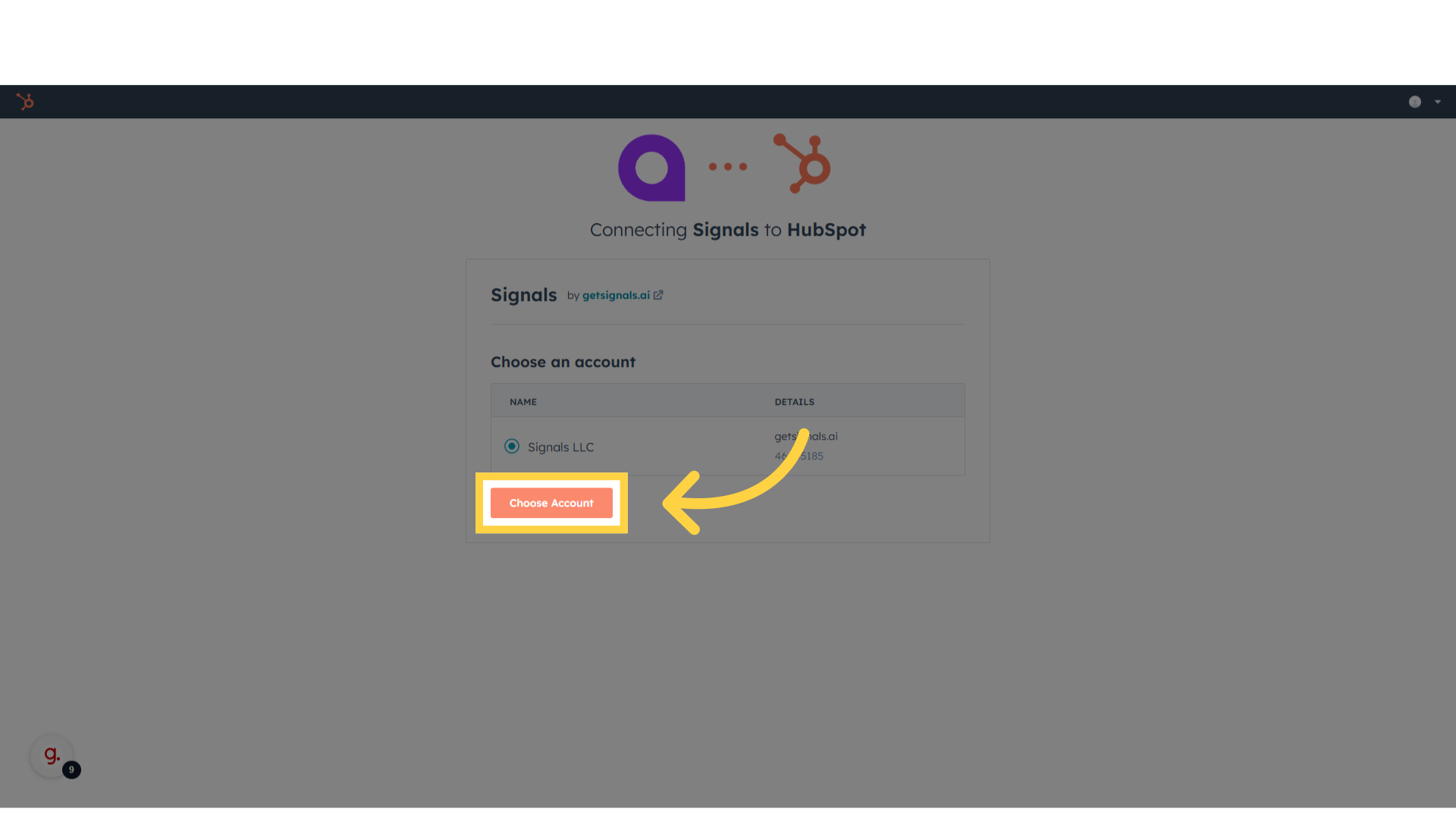
6. Turn on the integration
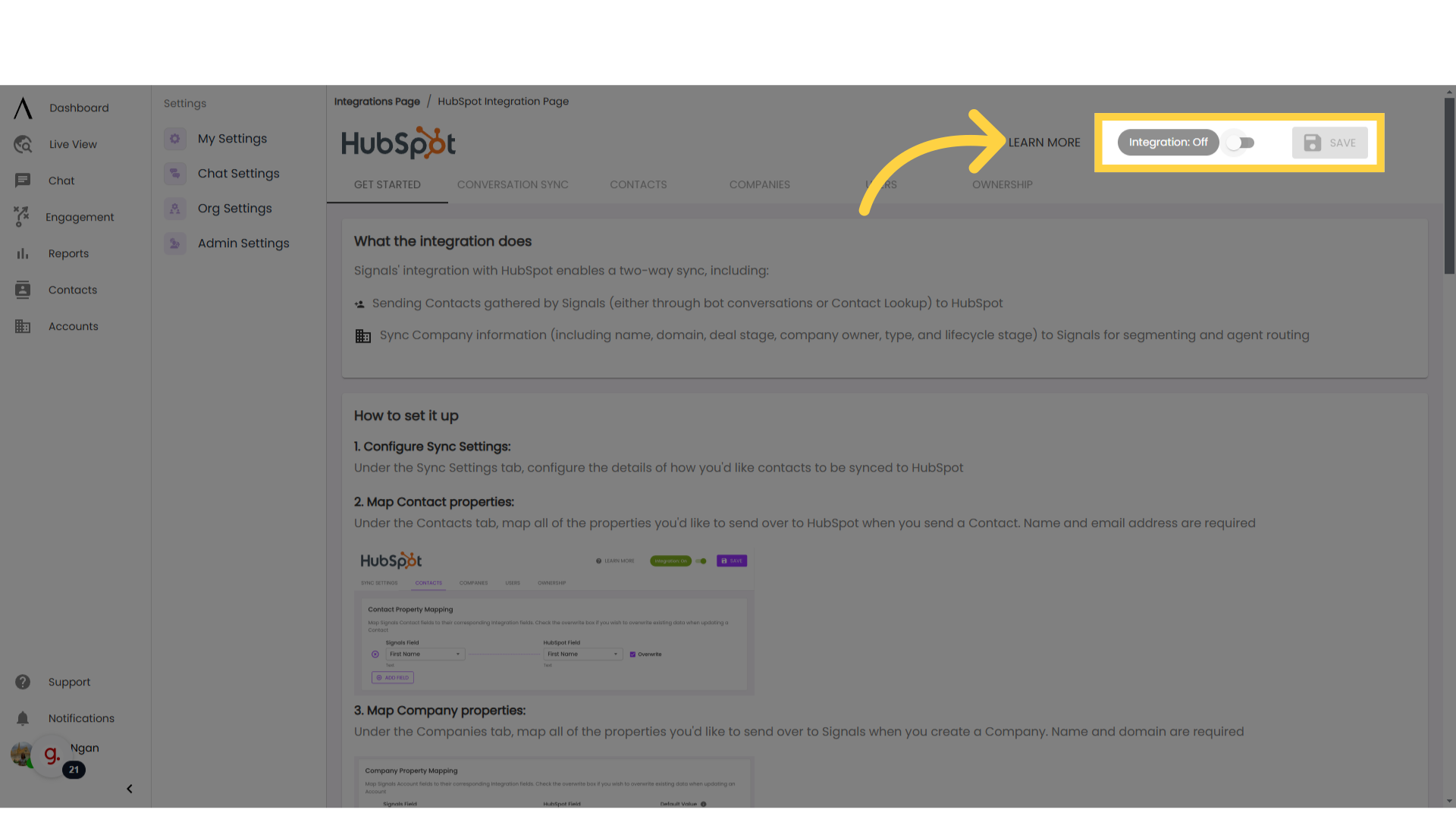
7. Go to "Conversation Sync"
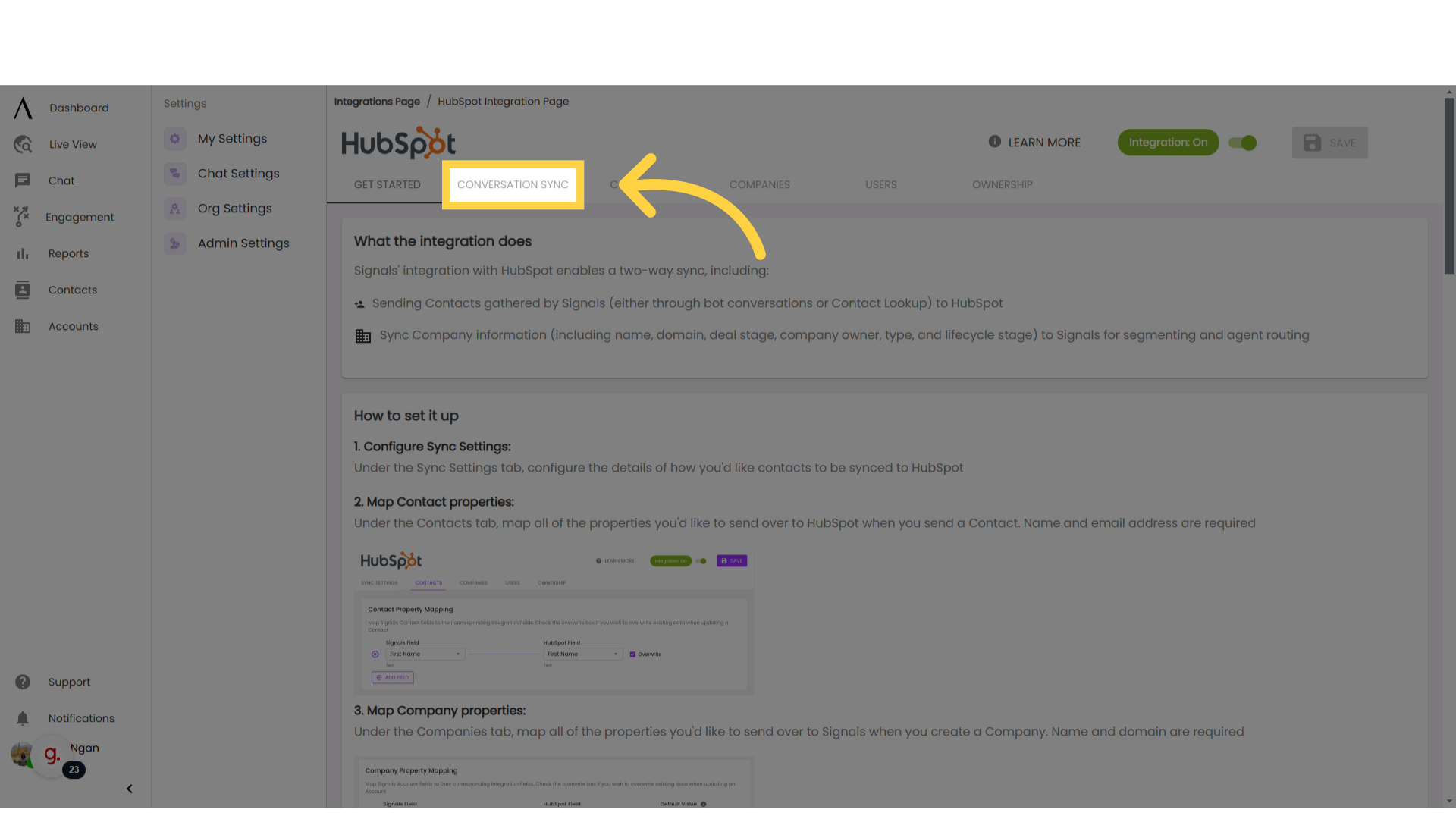
8. Configure your Minimum Criteria
Determine what criteria have to be met before a lead will be synced to HubSpot. The default setting is to send all leads to HubSpot, but you can specify here that a lead must meet a minimum lead score before it can be sent. Lead scores can be set within a bot flow, or they can be updated manually by chat agents. For more information about assigning lead scores in Signals, see our HelpDocs on Setting Lead Score Skills.
For HubSpot only: You can also optionally check the box to link HubSpot cookie to email address immediately. This will sync leads over to HubSpot immediately after an email is captured, without waiting for the conversation to close.
Note: Linking the HubSpot cookie to email address immediately can interfere with the Signals lead assignment function. If you want leads to be assigned in HubSpot based on agent actions within chat, we recommend leaving this option unchecked.
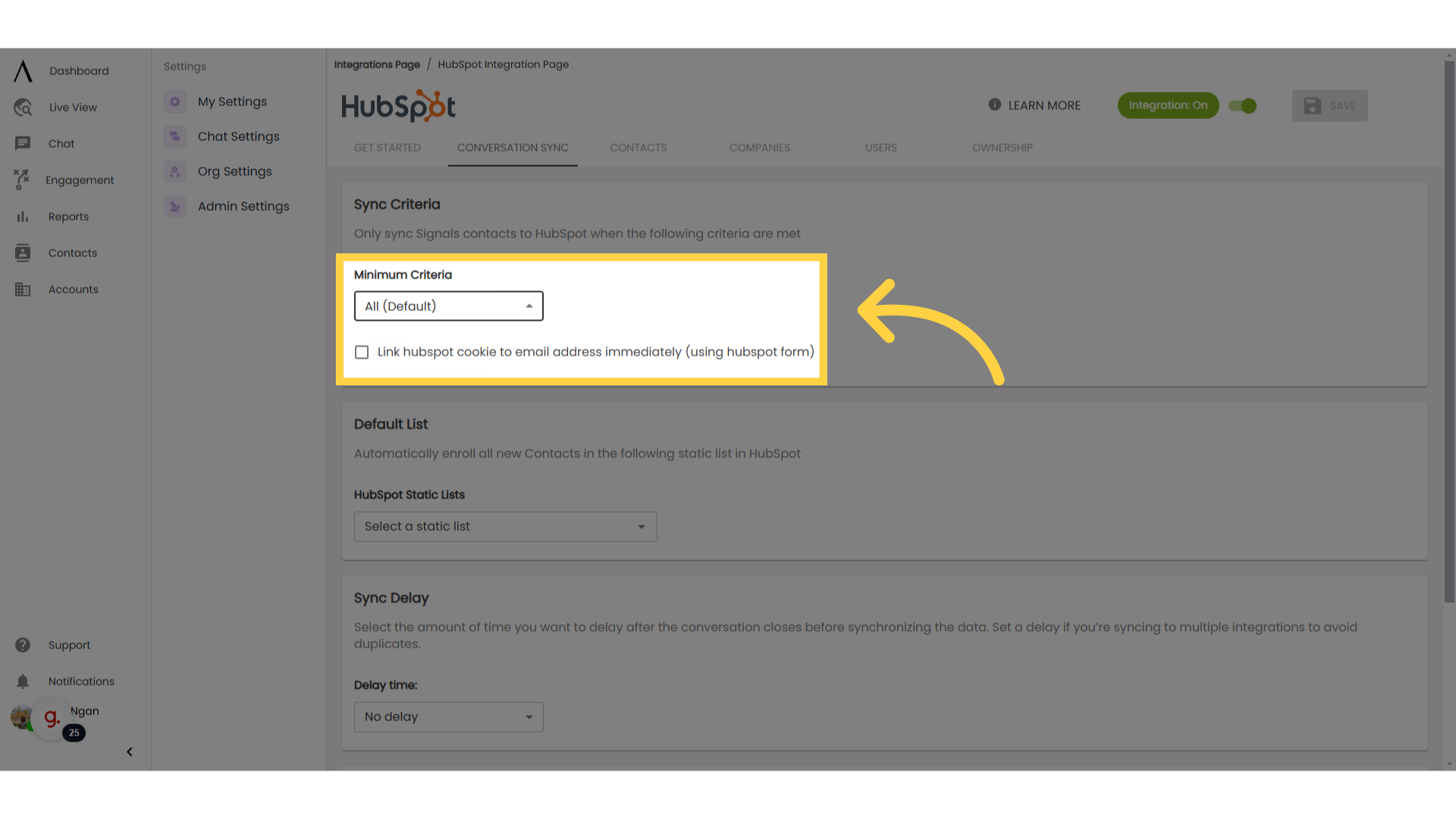
9. Set your "Default List"
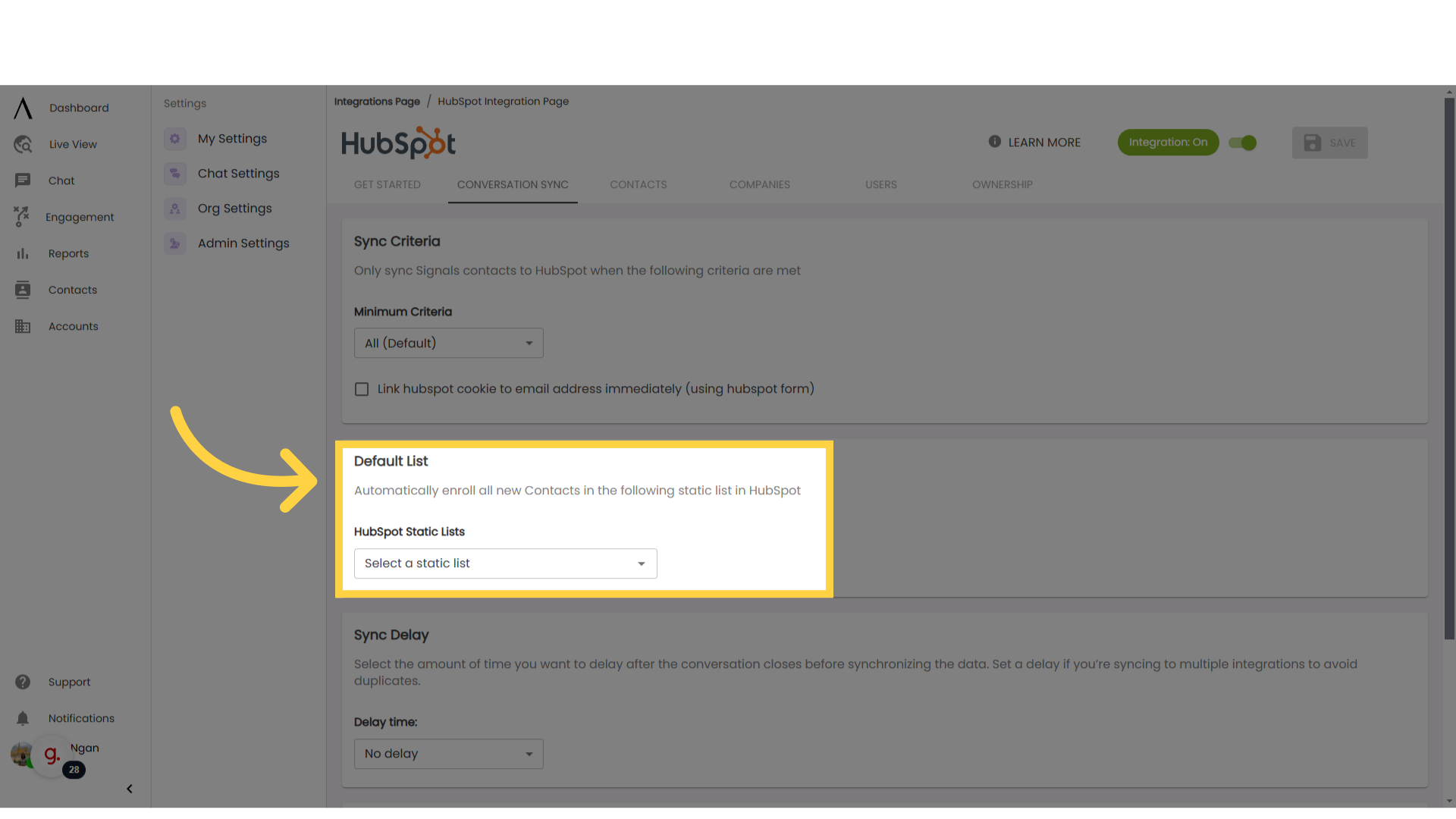
10. Establish delay times
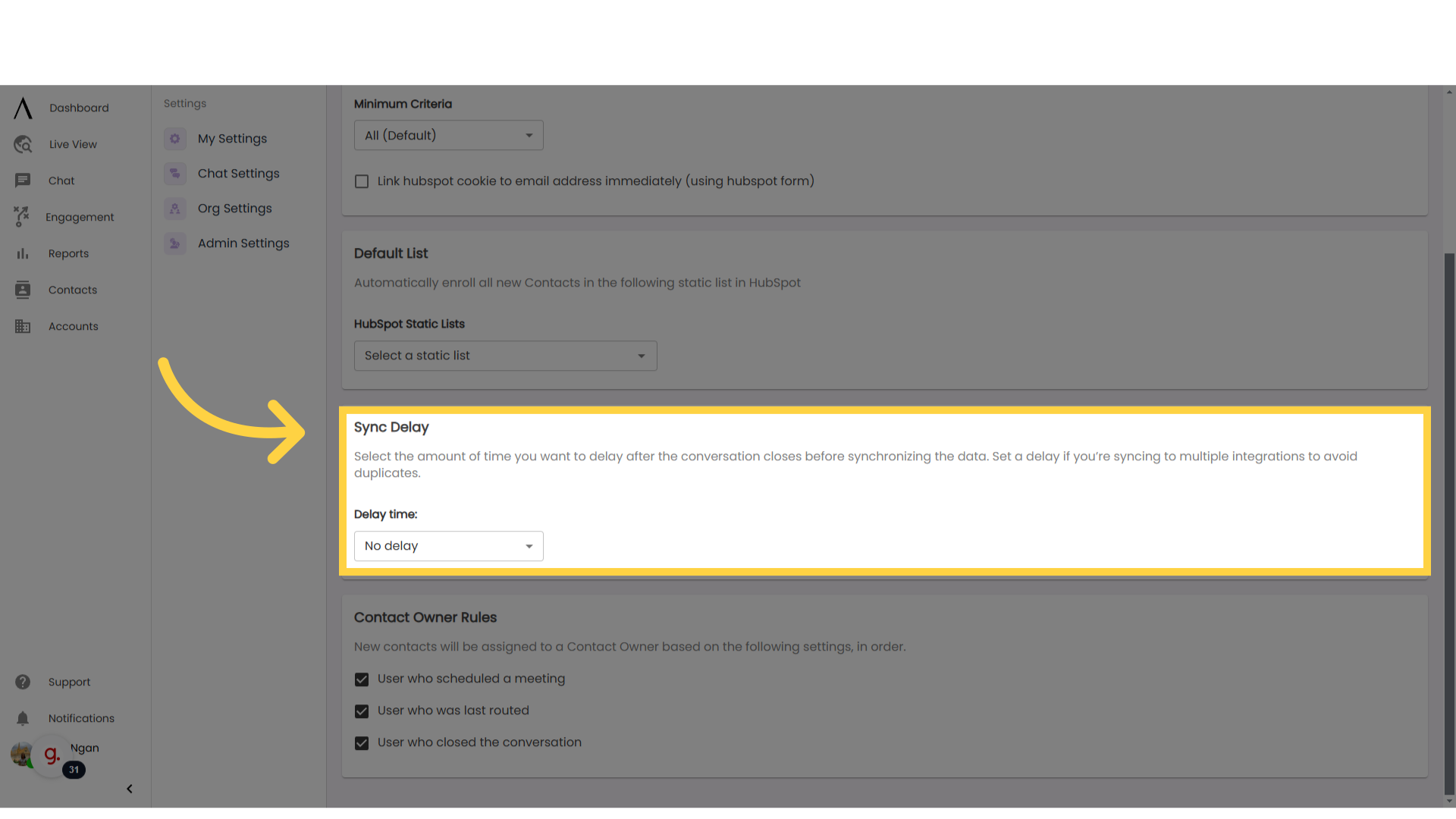
11. Determine "Contact Owner Rules"
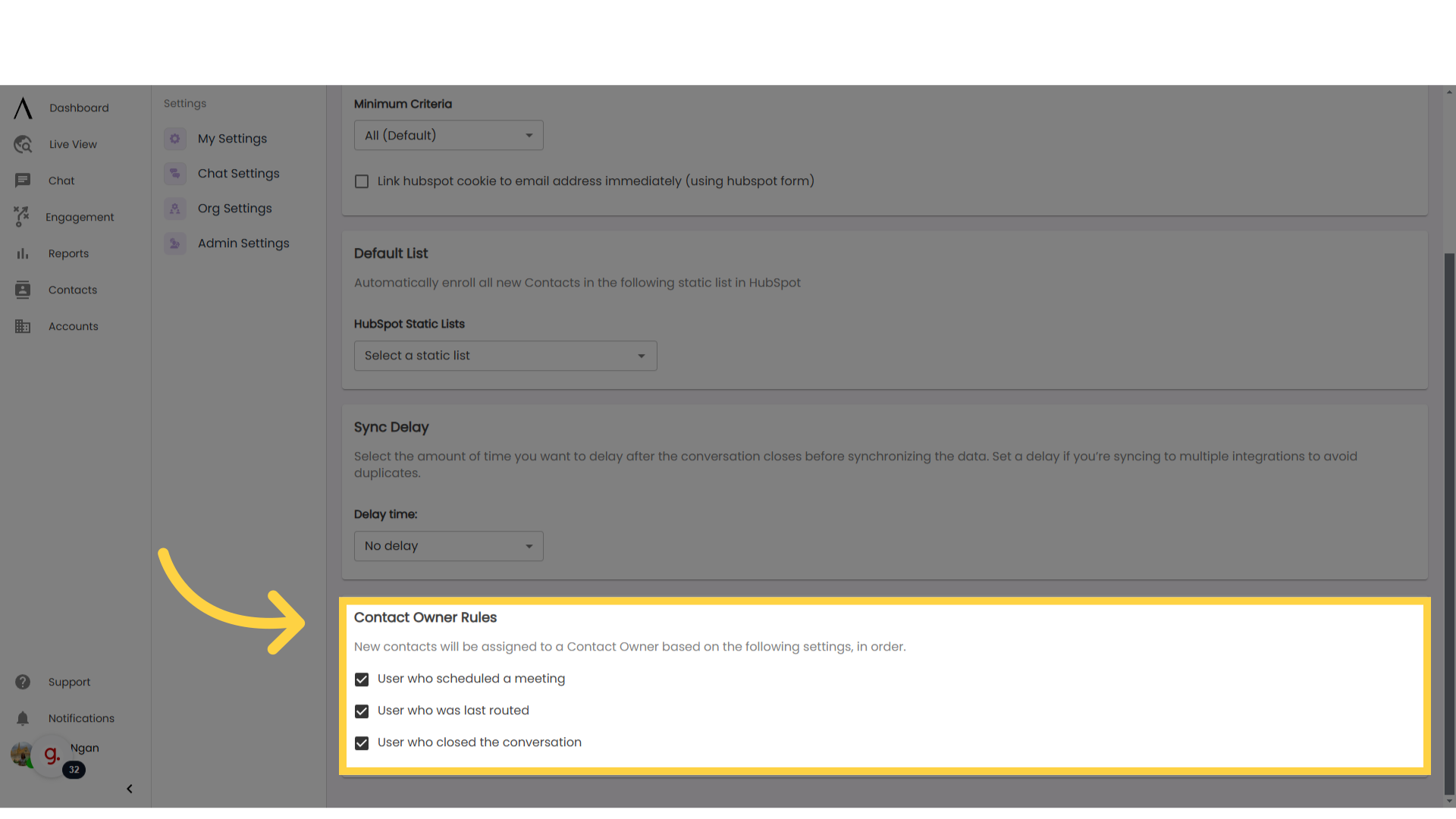
12. Navigate to "Contacts"
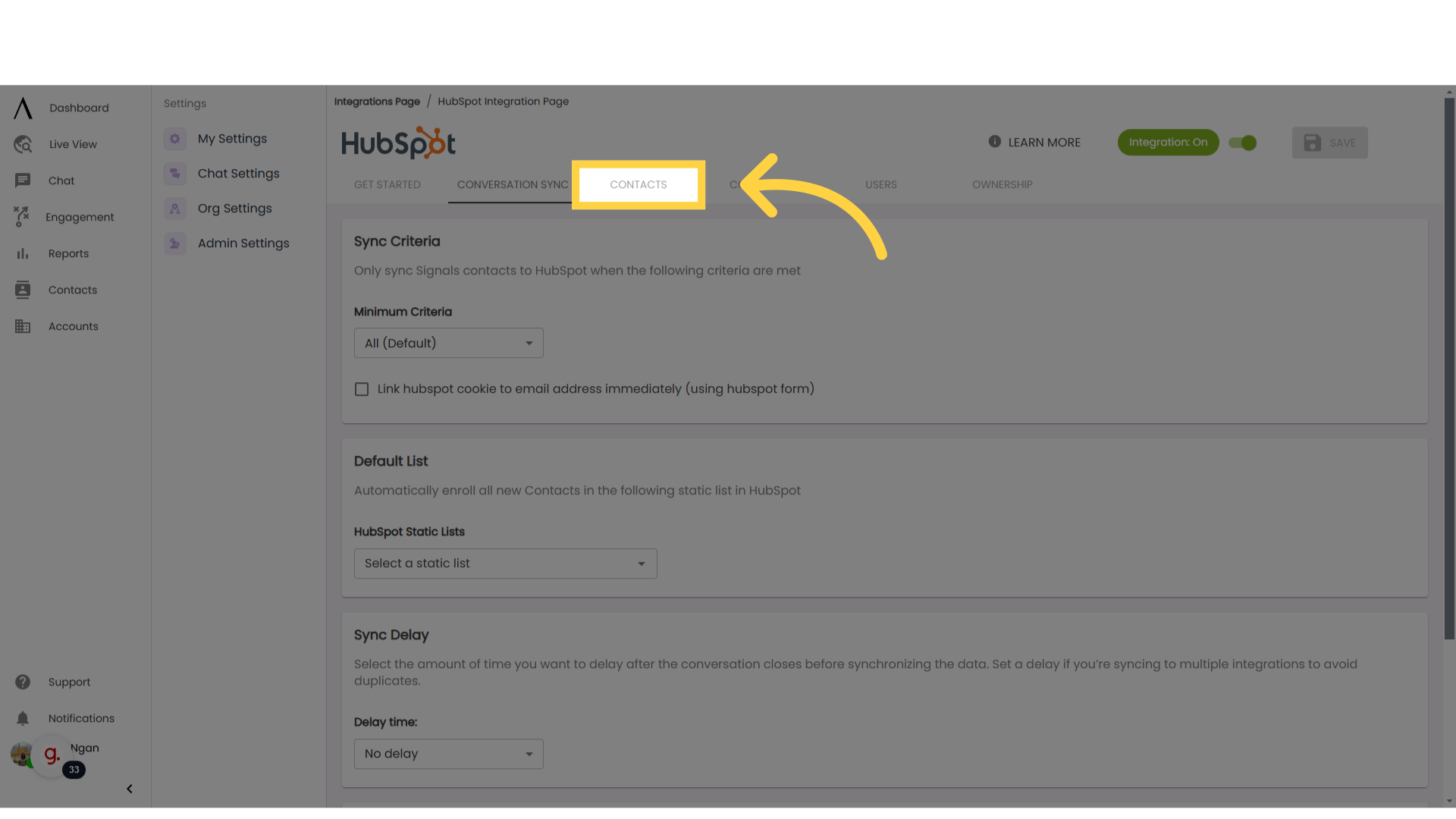
13. Configure "Contact Property Mapping" sections
Select the fields in your HubSpot instance that you want Signals information to be mapped to.
Note: if you want to track or map a field that doesn't show up in the list of default contact fields on the Signals side, create Custom Contact Fields. Once a new custom field is saved, it will show up in the drop-down list to map to HubSpot. For more information on using custom fields in bot flows, see our HelpDocs on Mapping Custom Fields to the CRM.
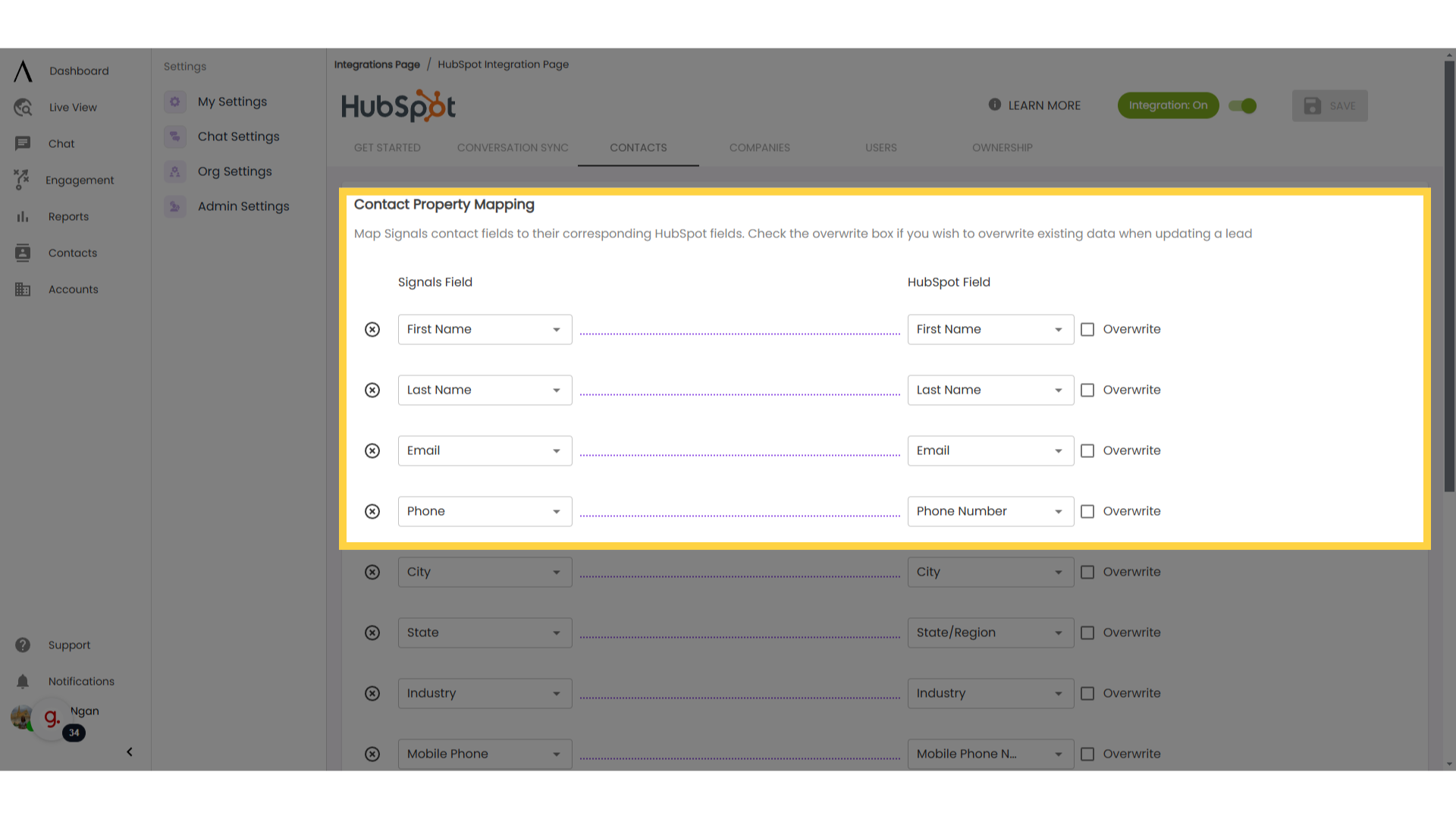
14. Click "Add Field"
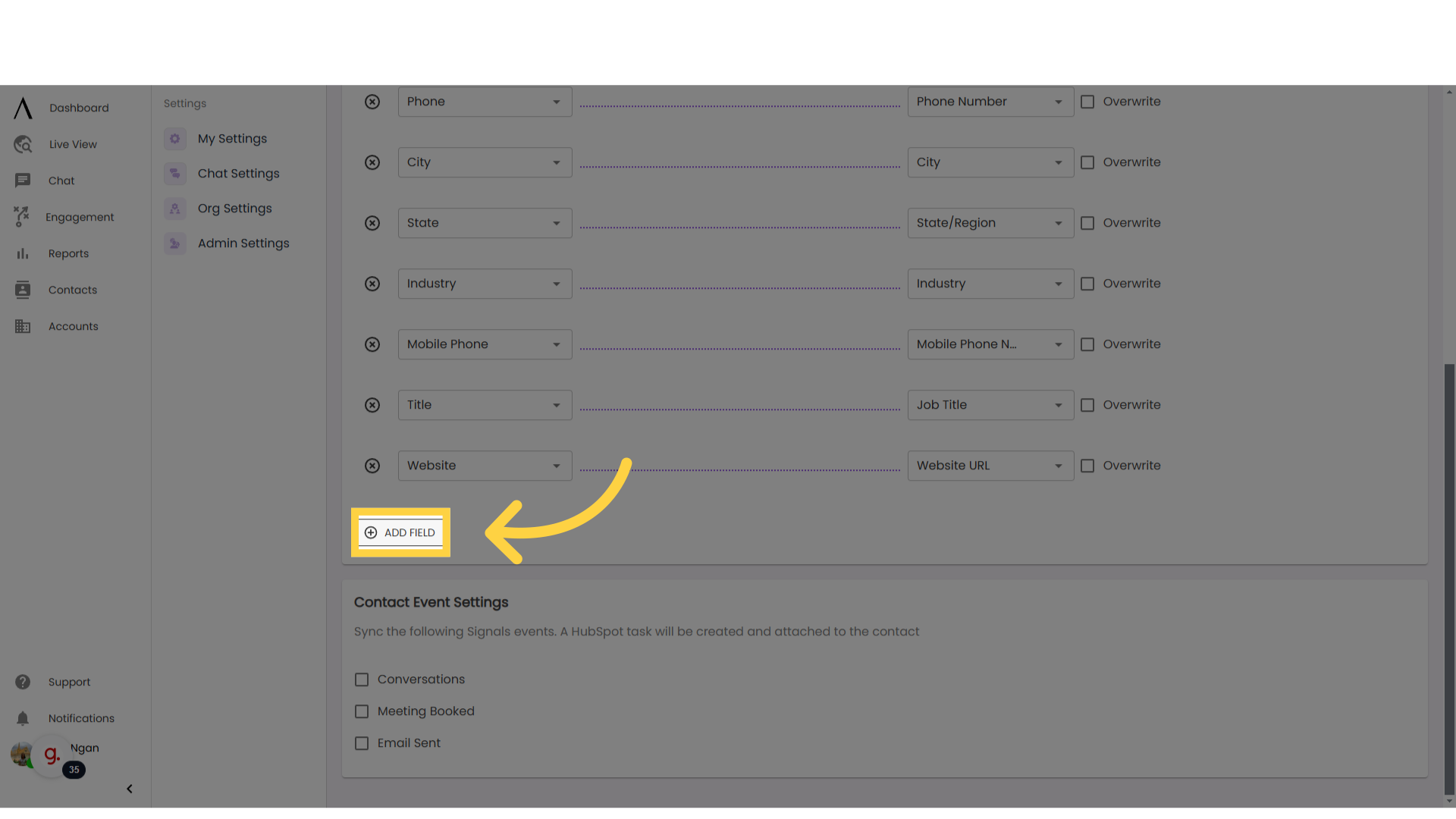
15. Go to "Users"
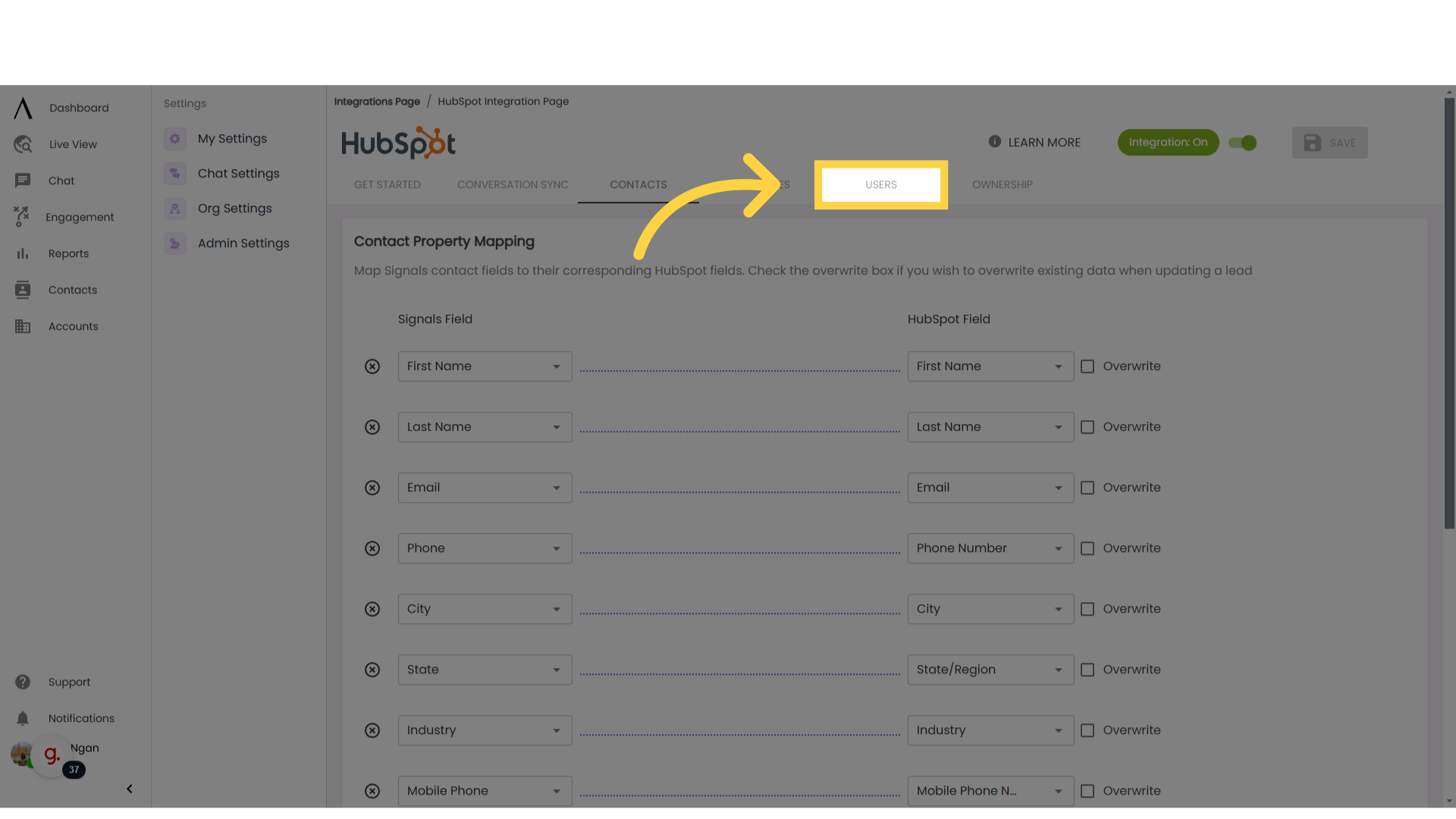
16. Click "Add User"
Important: Map each of your Signals users to their corresponding user in HubSpot. When adding licenses, don't forget to come back and update user mapping to ensure leads are assigned properly.
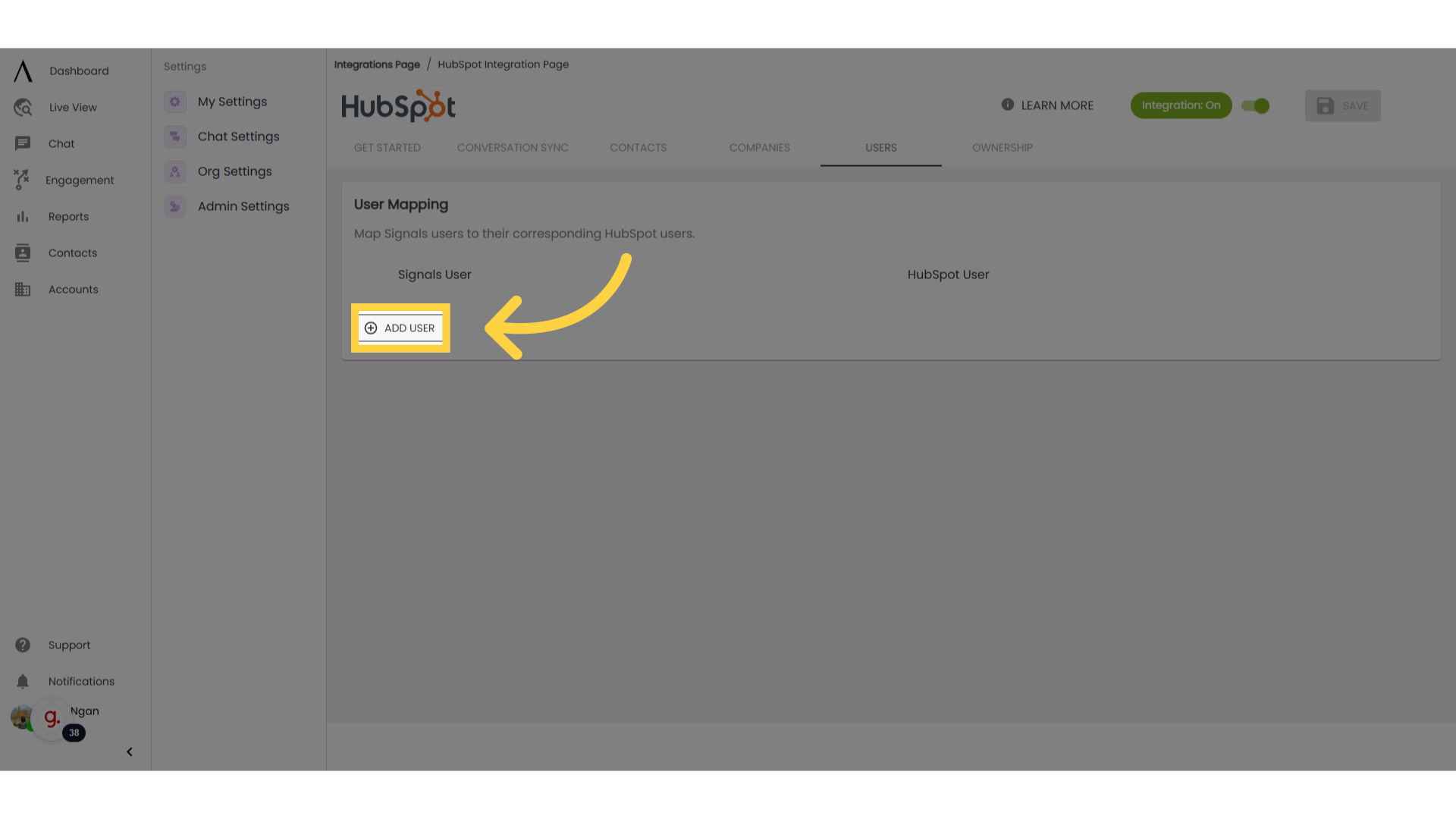
17. Navigate to "Ownership"
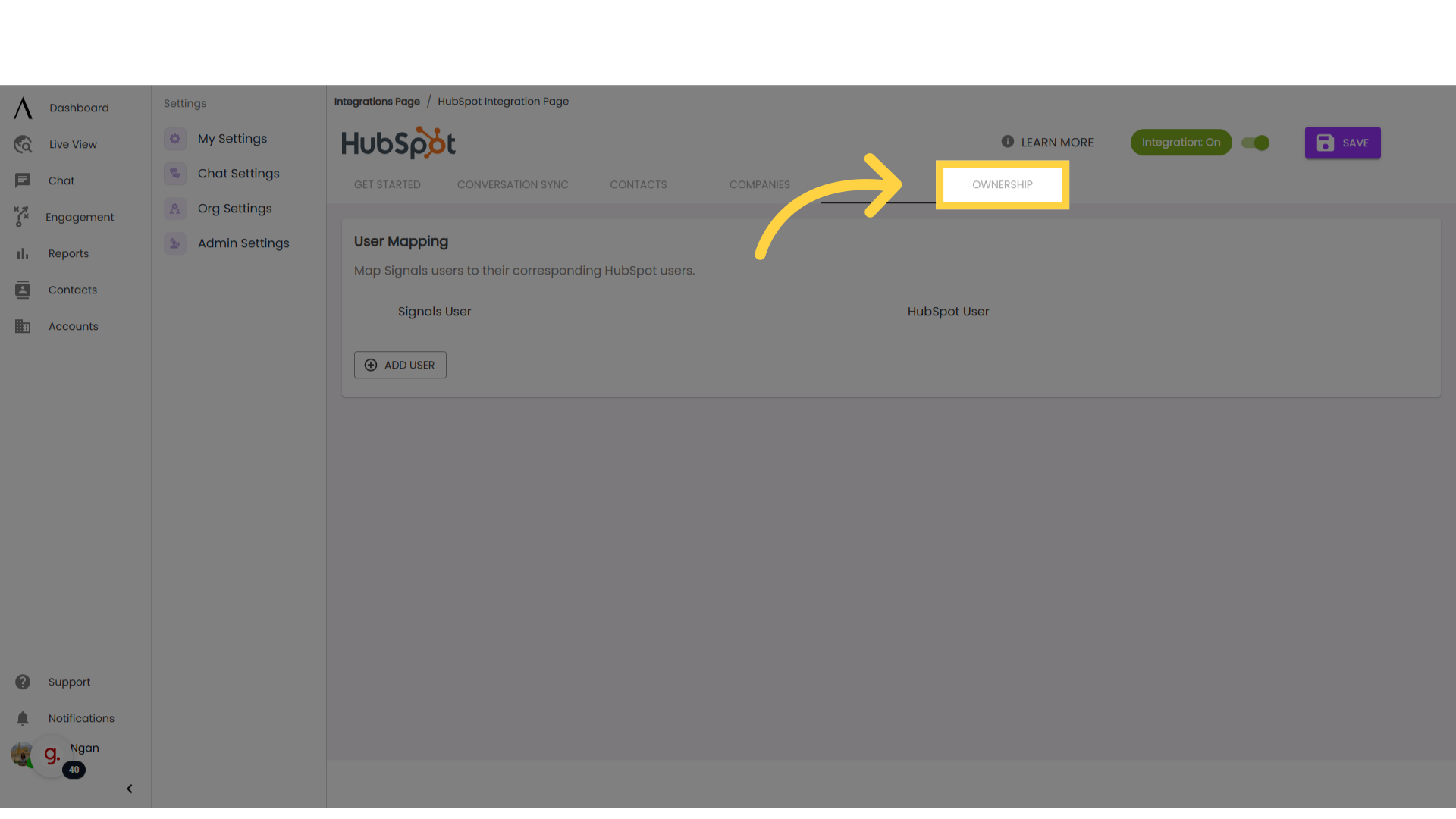
18. Segments
Use segments to define account ownership if you want to refer to a different owner field in HubSpot for different segments. For example, maybe you want your open opportunity segment to pull account owners from a field that says SDR_Owner, but your current customers are owned by the field CSM_owner. This feature will allow you to dynamically update account ownership as deals move through the pipeline. You'll first need to create segments in Signals to use in this account ownership section. See Creating a New Segment for more information.
On the HubSpot integration page, click Add Segment Rule
Select the first segment (for companies that exist in multiple segments, account owners will be assigned based on segment priority within the integration)
Select the HubSpot user field that defines account owner for this segment
Define a fallback owner (this will be the owner if the field you selected in Step 4 is blank or contains a user that isn't mapped to a Signals licensed user.
Fallback: If you don't want to use segments to define account ownership, you can select a single field in the CRM to pull account owners from. Select this field from the drop-down menu, and then choose a default owner for companies for whom that field is blank or contains a user that isn't mapped to Signals.
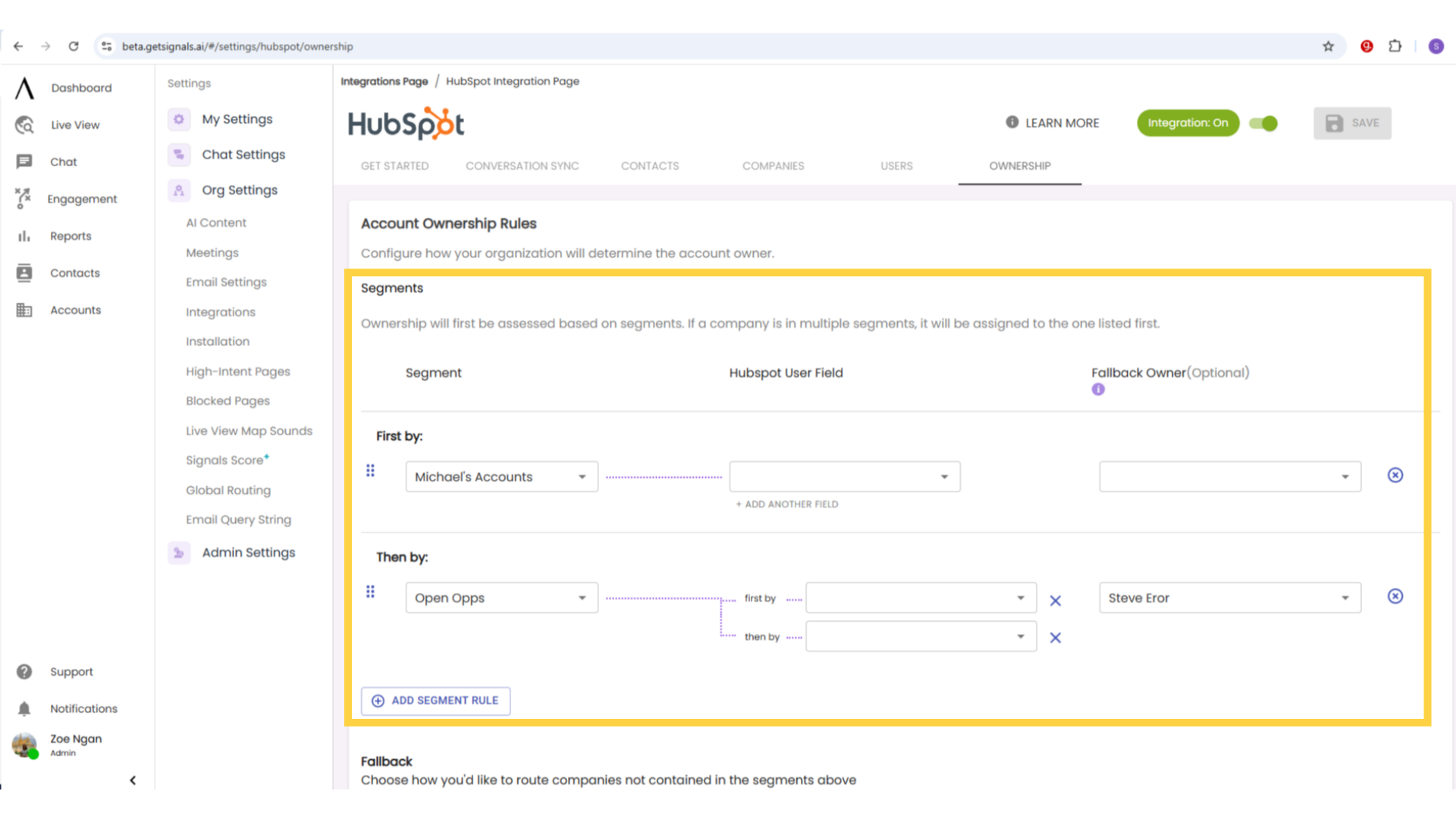
19. Remember to click "Save!"
Scroll up to the top of the integration settings page to save before navigating elsewhere in the system.
